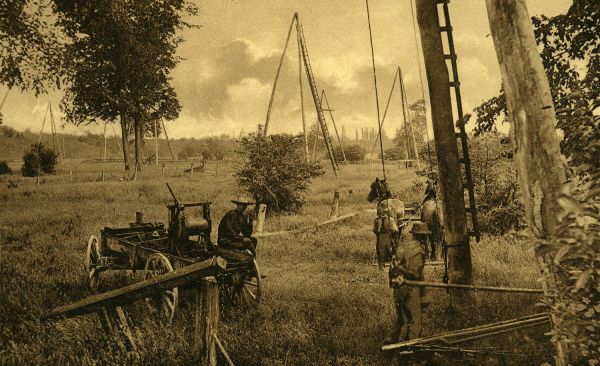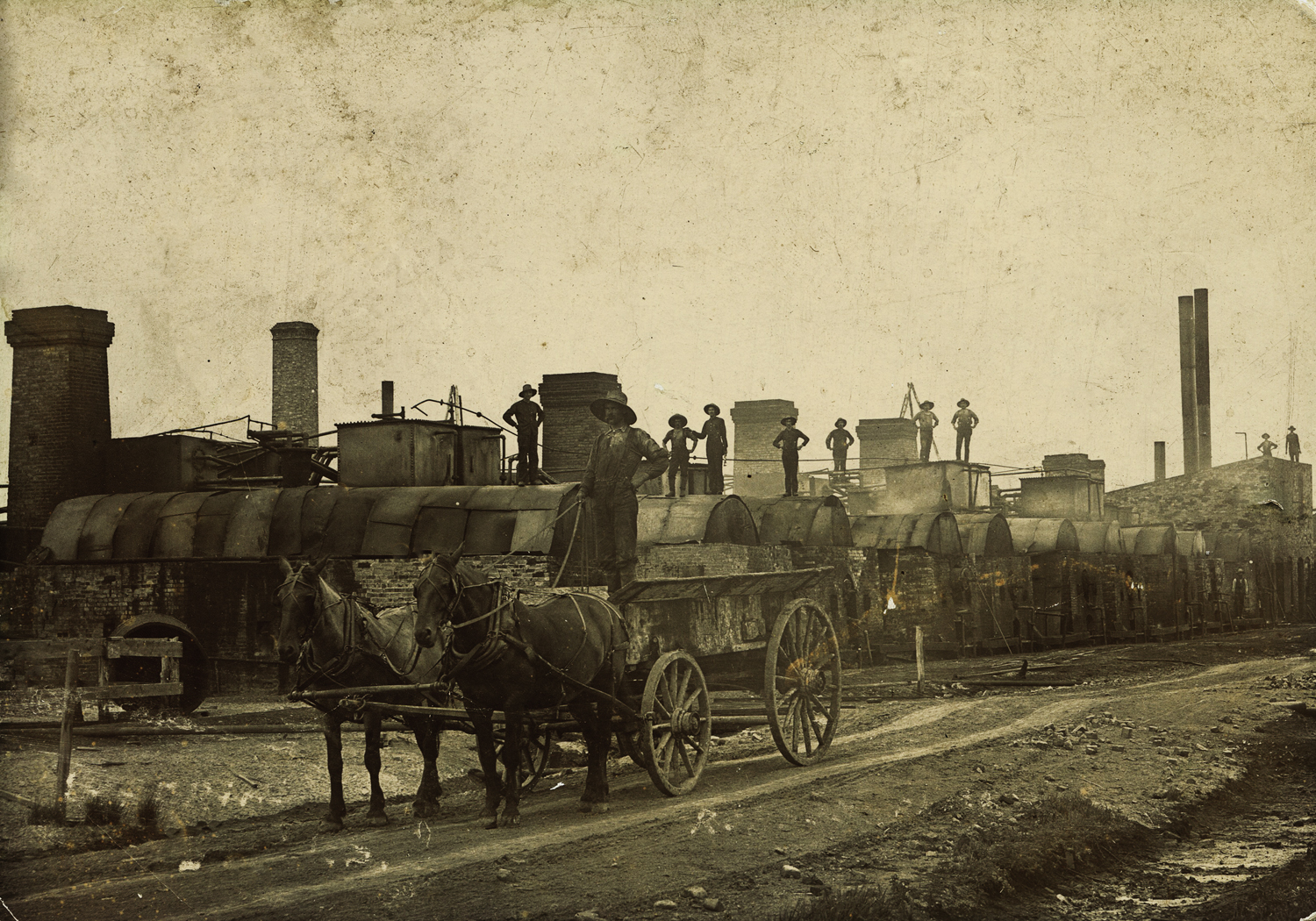"Canada's Victorian Oil Town"
Pioneers of the oil industry had been digging wells in Petrolia, alongside Oil Springs, since 1861. When oilmen left Petrolia after Shaw hit his gusher in Oil Springs, small refining operations persisted and excess crude oil was transported to Petrolia in wooden barrels. The tide changed in 1865 when Benjamin King hit a gusher in the swampy woods near Bear Creek in Petrolia. This discovery came at a time when production was declining in Oil Springs, so once again the settlers moved their operations north to the new oil field. The oil patch at Petrolia proved to be much larger than the one in Oil Springs and although it was subject to many of the ups and downs that plagued production in Oil Springs, it ultimately proved to be more stable and long-lasting.

Early Petrolia oil field. Oil Museum of Canada Collection
As the production of oil increased, some residents were able to specialize in their activities and constructed refineries. In 1864, Oil Springs had 20 refineries and Petrolia was home to another five. Jacob L. Englehart emerged as one of the most successful of these operators. His second refinery, the Silver Star refinery in Petrolia, was said to be the largest and most sophisticated refinery in the world for its time. Later, Englehart also played a leading role in forming the Imperial Oil Company Ltd., in order to counter the American oil giant Standard Oil Company, and Petrolia became the head of operations.

Imperial Oil Refinery, Petrolia c. late 1800s. Oil Museum of Canada Collection
A number of technical advances emerged from the Petrolia oil field. The high cost of transporting oil to the railway head at Wyoming motivated John H. Fairbank to construct a spur line to Petrolia. Fairbank also invented the jerker-line system for pumping oil, which uses a single power source to pump multiple wells which provided a much-needed efficiency for oil producers. After large fire destroyed much of the oil which had been stored in open, above-ground wooden tanks, John D. Noble began constructing in-ground storage tanks. Finally, the Canadian pole-tool drilling method was one of the most successful and widespread innovations of the Canadian oil industry. Wooden poles to which the drill bit was attached had previously been used in drilling artesian wells, where the poles proved more useful than rope for keeping the drill bit straight when boring through hard rock. William McGarvey was the first to apply the method of steam-powered wooden poles to the petroleum industry and brought the rig with him to develop the oil fields of Galicia (modern Poland and Ukraine). The Canadian pole-tool drilling method continued to play a vital role in drilling oil wells all over the world, including Java, Sumatra, and Egypt, among others.


